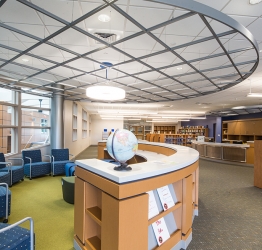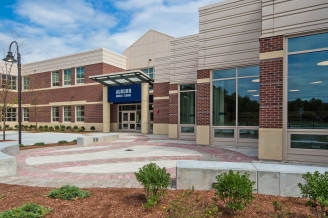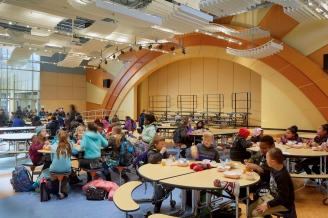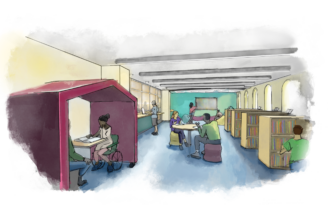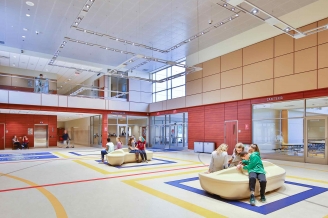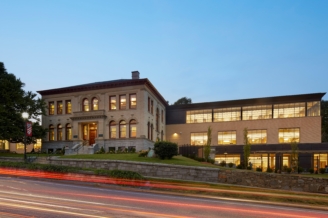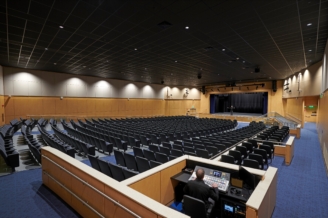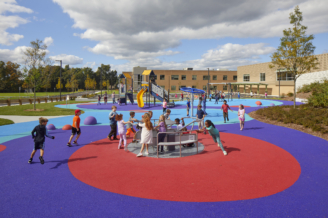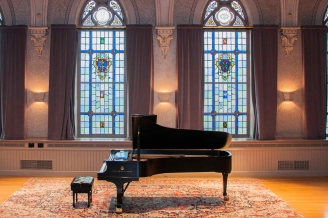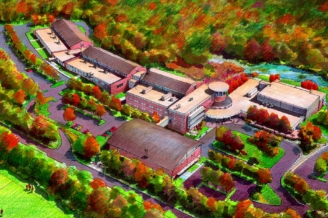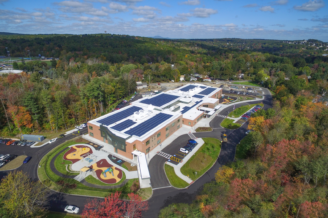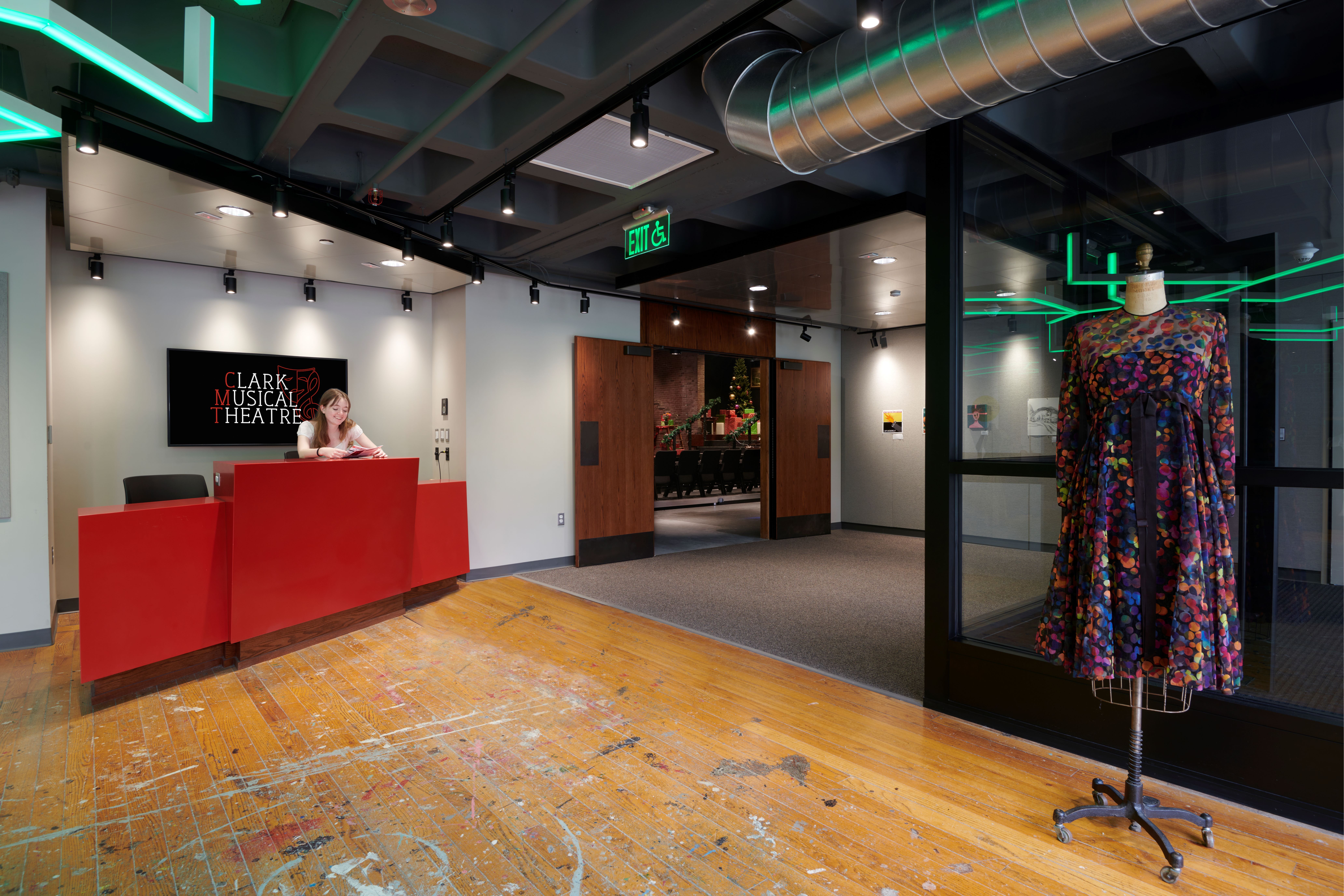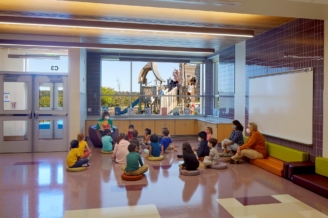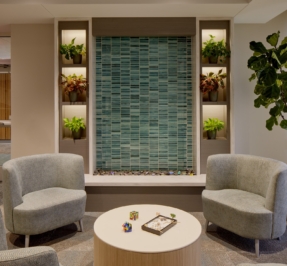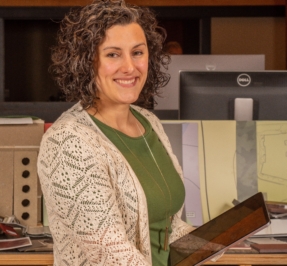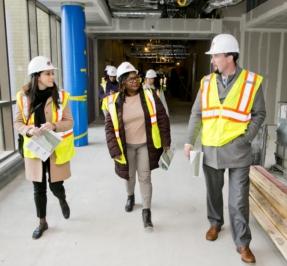Considerations for Modern Library Design
Many predicted that the growth of the internet and e-readers would create an accompanying decline in the use of libraries, but so far this has not proven to be the case. Changes in technology have impacted how libraries are used, but library circulation and visits have not seen major declines in recent years.
School, public and academic libraries are all being transformed and serving their respective communities in some new and different ways. LPA has been involved in a number of library design projects recently, including numerous public school projects, the Shrewsbury Public Library, and academic libraries like the Gordon Library at Worcester Polytechnic Institute and the Dinand Library at the College of the Holy Cross.
At Mountview Middle School in Holden, which is slated to open later this year, the administration wanted to take a unique approach to the design of the media center/library facilities. The thinking at Mountview was that each student would have their own laptop, and that common areas throughout the school could be equipped as “internet cafés” with movable carts of books and a school-wide wireless network. With these more dispersed facilities, the size of the central media center could be reduced. The media center will be about the size of two classrooms to hold the book collection, so that in the future the space could be repurposed as classrooms, if needed.
The decision at the recently opened Auburn Middle School was much different. The school also has a full coverage wireless network and all students have personal devices, but rather than having common areas used as library space, Auburn wanted their library to be a large, multi-use space. With large and small meeting spaces, sound system, and interactive whiteboard, the library is an ideal space for collaborative work, presentations, and meetings in addition to being a full-service school library.
Worcester’s Nelson Place School, now under construction, includes a library that is centrally located and can be isolated from the rest of the school, so that it could potentially serve as a public library for the community at times when the school is otherwise closed.
In higher education, LPA has worked with the College of the Holy Cross, the WPI Gordon Library, and the UMass Medical School Library on projects that all helped to accommodate changing needs. Holy Cross took the opportunity to re-purpose space, removing an unused card catalog to develop a more efficient technical services suite. The Gordon Library needed to reconfigure space for their changing enrollment demographics and to provide space to address their burgeoning need for collaborative meetings. UMass Medical also needed to integrate new technology, while keeping the building open to the college community during construction.
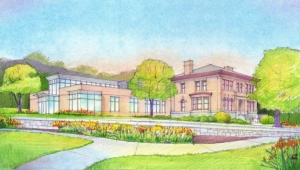 The Town of Shrewsbury has been working with LPA on the restoration, renovation, and expansion of their historic public library building, originally built in 1903. The new design will allow for greater flexibility in how the library is used. The new space will be able to better accommodate the more traditional needs of quiet spaces to study and read, but also provide spaces where people can come together and work collaboratively without disturbing other patrons.
The Town of Shrewsbury has been working with LPA on the restoration, renovation, and expansion of their historic public library building, originally built in 1903. The new design will allow for greater flexibility in how the library is used. The new space will be able to better accommodate the more traditional needs of quiet spaces to study and read, but also provide spaces where people can come together and work collaboratively without disturbing other patrons.
Automated handling systems and better integrated technology provide a resource to the public and also free up staff time for assisting library users and providing programming for children and adults. A new teen space is isolated to allow for noise and social activity, but is also highly visible so that the space can be monitored and well-supervised. Space for families with young children is well-lit, comfortable, and inviting.
Library Director Ellen Dolan said of the renovation, “Our previous building was segmented with poor sight lines, while the new design enables staff to see every corner of the room and for the public to easily locate staff. One of the important design considerations was to create a space with the flexibility to both meet current needs and provide options for the future use of the library. With few built-ins and movable furniture the space is a functional, flexible municipal building to be proud of.”
Libraries, it seems, are experiencing a time of transition, not decline. Technology may slowly be replacing print collections, but the need for collaborative work spaces and access to new technologies is increasing. The common theme among all of the library design projects that LPA has been involved with in recent years seems to be the desire for flexible and comfortable space that can meet a variety of changing needs.
Categorized In: Articles, News
Tagged In: Auburn, K-12 Schools, Library, Renovation, Shrewsbury, Westborough, Worcester
Share This



